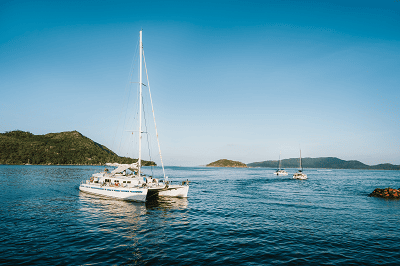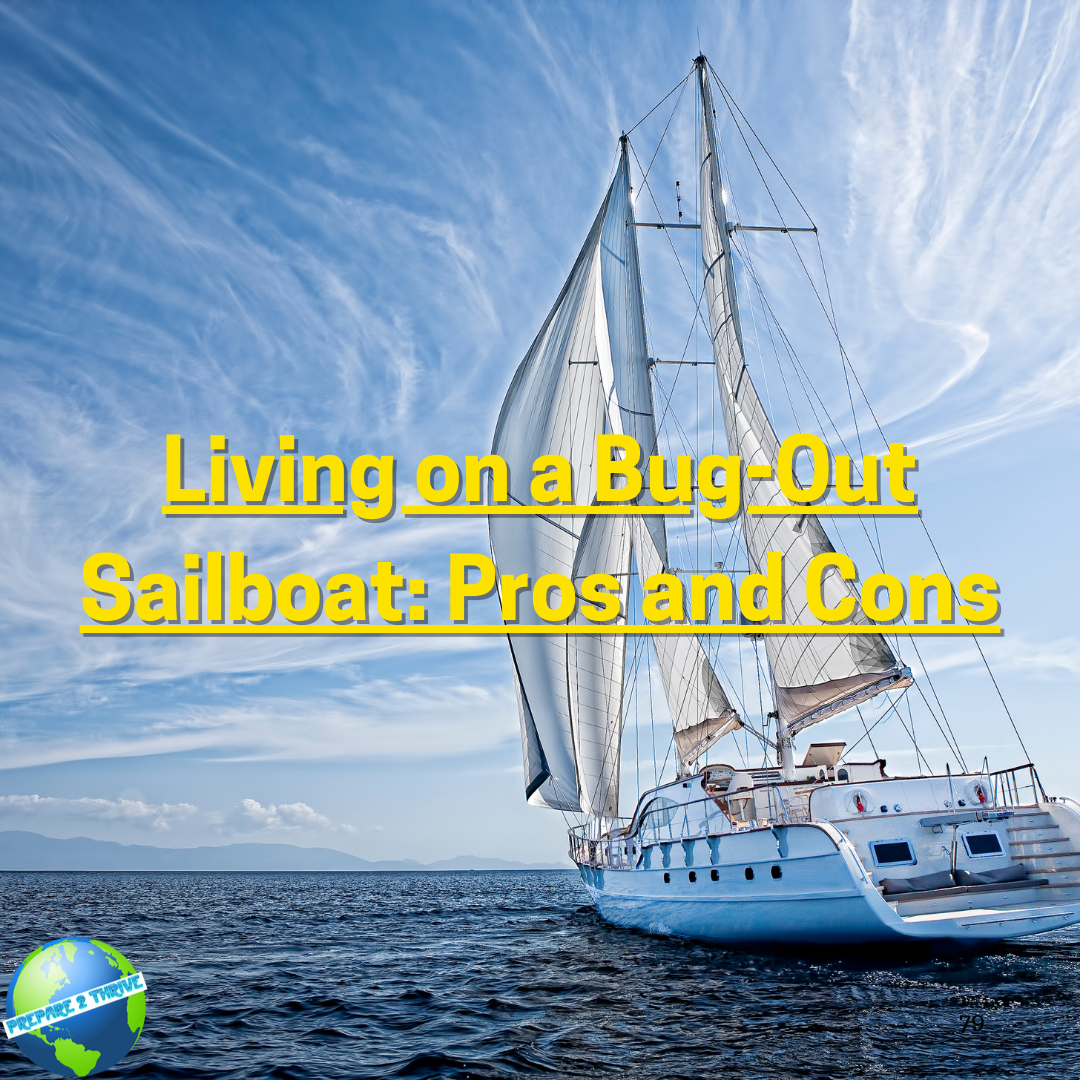Living on a sailboat has become increasingly popular over the years, especially among those seeking a simpler and more sustainable lifestyle. While some choose to live on a sailboat for the adventure and freedom it offers, others see it as a means of preparing for emergencies or natural disasters. In this article, we will explore the pros and cons of living on a bug-out sailboat and what factors one should consider before making the decision to live on one.
Advantages of Living on a Bug-Out Sailboat
A. Mobility and flexibility: ability to travel and relocate easily
One of the biggest advantages of living on a sailboat is the freedom and mobility it provides. Living on a sailboat allows you to easily relocate and explore new places without being tied down to a specific location. It also provides a sense of independence as you have full control over where you go and when you leave. In case of an emergency, a bug-out sailboat can be a useful tool for evacuating from an area quickly.
B. Self-sufficiency: generating own electricity, water, and food
Living on a sailboat encourages self-sufficiency and reduces dependence on external resources. Many sailboats are equipped with solar panels and wind turbines that generate electricity, and watermakers that turn seawater into potable water. Furthermore, fishing and growing your own food are popular activities among sailboat dwellers, allowing them to be more self-sufficient in their day-to-day life.
C. Low cost of living: reducing living expenses and financial burden
Living on a sailboat can be much cheaper than living on land. Sailors don't have to pay rent or mortgage, property taxes, and other expenses that come with owning or renting a home. The cost of maintaining a sailboat is also lower than maintaining a house or apartment, as long as regular maintenance is performed.
Challenges of Living on a Bug-Out Sailboat
A. Limited space and storage: adapting to a smaller living area and limited storage
Living on a sailboat requires adapting to a smaller living area, limited storage space, and the need to minimize possessions. You will have to learn how to make the most of the space available, and be mindful of what you bring on board. While some people see this as an opportunity to simplify their life, others may struggle with the lack of space and feel confined.
B. Maintenance and repairs: keeping up with regular maintenance and dealing with unexpected repairs
Maintaining a sailboat requires regular maintenance to ensure it remains seaworthy and safe. Maintenance tasks include cleaning, polishing, and painting the hull, servicing the engine and systems, and checking the rigging. Sailors should also be prepared for unexpected repairs that can occur at any time, especially when at sea.
C. Weather and environmental factors: coping with storms, rough seas, and other challenges of living on water
Living on a sailboat exposes you to the elements of nature, including rough seas, strong winds, and extreme temperatures. Sailors must be prepared to face these challenges and adapt to the environment. Living on a sailboat also means being mindful of your ecological footprint and finding ways to reduce your impact on the environment.
Lifestyle Considerations
 A. Social isolation: adjusting to a more solitary lifestyle
A. Social isolation: adjusting to a more solitary lifestyle
Living on a sailboat can be a solitary experience, especially when sailing alone or for long periods. Sailors must be comfortable with spending time alone and adapting to a more solitary lifestyle. However, living on a sailboat also provides opportunities for meeting new people and building a tight-knit community among other sailors.
B. Environmental Impact
Living on a bug-out sailboat also presents an opportunity to live a more sustainable and eco-friendly lifestyle. By generating their own electricity, water, and food, sailors can reduce their reliance on fossil fuels and the traditional food supply chain. Additionally, the limited space on a sailboat forces sailors to be mindful of their consumption and waste production, encouraging a minimalist and low-impact lifestyle.
However, it is important to note that living on a sailboat is not automatically an environmentally friendly choice. Inexperienced sailors may accidentally damage sensitive marine ecosystems or contribute to pollution through improper waste disposal. It is crucial for sailors to learn and follow best practices for sustainable living on the water.
C. Cultural and Personal Preferences
Living on a sailboat may require adapting to new cultures and lifestyles. Sailors may encounter different languages, customs, and traditions as they travel from place to place. Additionally, living in a small and isolated community on the water may require adjusting to a more communal and self-sufficient way of life.
Personal preferences and comfort levels are also important to consider when deciding to live on a sailboat. For example, some people may struggle with the lack of privacy or constant motion of the boat. Others may thrive in the adventurous and nomadic lifestyle that sailing offers.
Making the Decision to Live on a Bug-Out Sailboat
Deciding to live on a bug-out sailboat is a big decision that requires careful consideration and planning. Here are some important steps to take before making the transition:
A. Evaluating Personal Priorities and Goals
The decision to live on a sailboat should align with personal priorities and goals. Factors such as lifestyle, career, and family should all be taken into consideration. Sailors must ask themselves what they hope to gain from living on a sailboat, and whether the potential challenges and sacrifices are worth it.
B. Researching and Preparing for the Lifestyle
Before making the transition to living on a sailboat, it is important to gather as much information as possible. Research topics such as boat maintenance, navigation, weather patterns, and emergency procedures. Connect with other sailors and sailing communities to learn from their experiences and expertise.
C. Making a Plan and Taking Action
Once sailors have evaluated their priorities and prepared for the lifestyle, it is time to make a plan and take action. This may involve purchasing a sailboat, learning to sail, and downsizing possessions. It is important to take things slow and gradually transition to living on the water, rather than diving in headfirst.
Conclusion
Living on a bug-out sailboat is a unique and adventurous lifestyle that comes with both advantages and challenges. The mobility and self-sufficiency of living on a sailboat can be incredibly liberating, while the limited space and maintenance requirements can be daunting. Ultimately, the decision to live on a sailboat should align with personal priorities and goals. By considering the advantages, challenges, and lifestyle considerations, sailors can make an informed decision about whether living on a bug-out sailboat is right for them.
Hashtags: #sailboatlife #bugoutsailboat #lowcostliving #selfsufficiency #environmentallyconscious #mobility #limitedspace #socialisolation #maintenanceandrepairs #culturalpreferences
